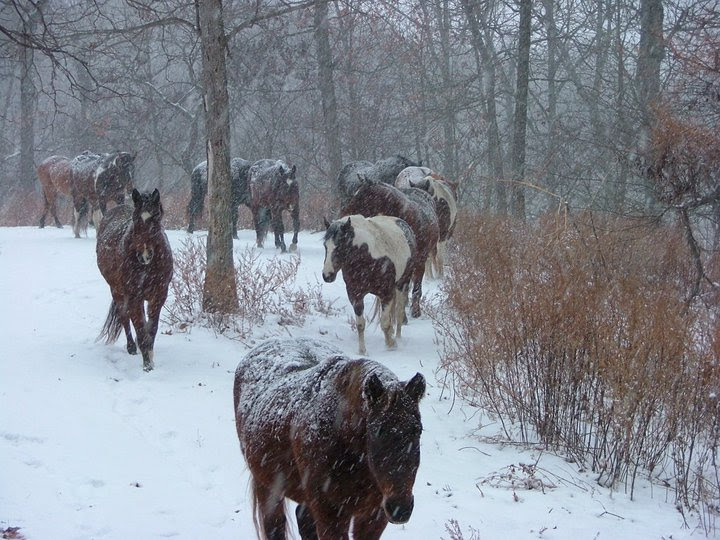
A question we get asked a lot at DuBois Center is, “What do you do with the horses in the winter?” The answer varies depending on the severity of the weather. Horses possess many adaptations to help them stay comfortable in even the most extreme conditions.
For instance, you might notice that our herd is fuzzier in the winter. Their thicker coats help insulate them from the cold, as well as retaining oil that repels moisture. Internally, their metabolism heats the horses from the inside out. As long as a horse has an adequate supply of hay and grain (which we provide) to fuel this “furnace,” it will not suffer from lower temperatures. Short bouts of physical exertion, such as bucking and running as well as shivering, also help to heat up muscles and stabilize internal temperatures.
During extreme conditions, like during the recent polar vortex, our horses come into the barn daily for an extra feeding. The barn is adapted as a wind shelter and left open on one end, allowing the horses to meander in and out at their leisure. In addition, there is a heated waterer outside the barn, providing the horses (and barn cats) with constant access to fresh water.
So, when the temperatures drop and wind speeds pick up, have no fear – a combination of horse anatomy and proactive care ensure the health of our herd.
